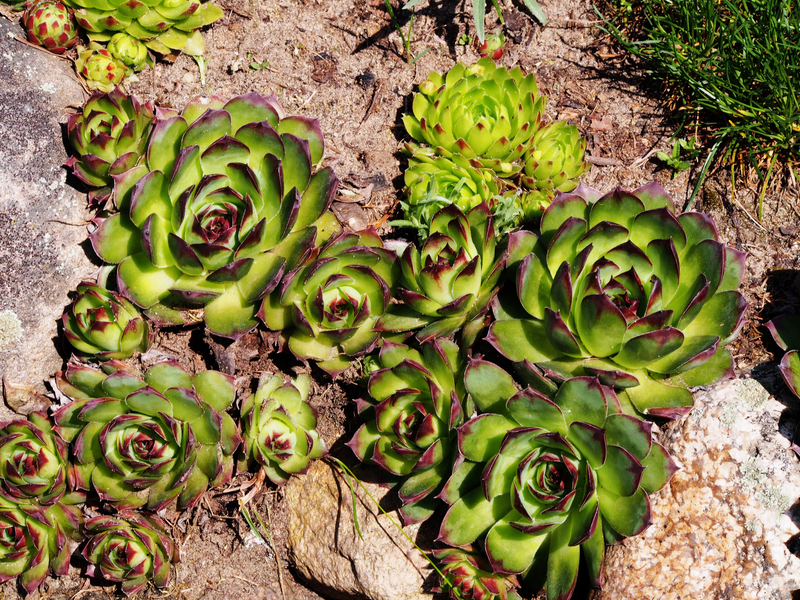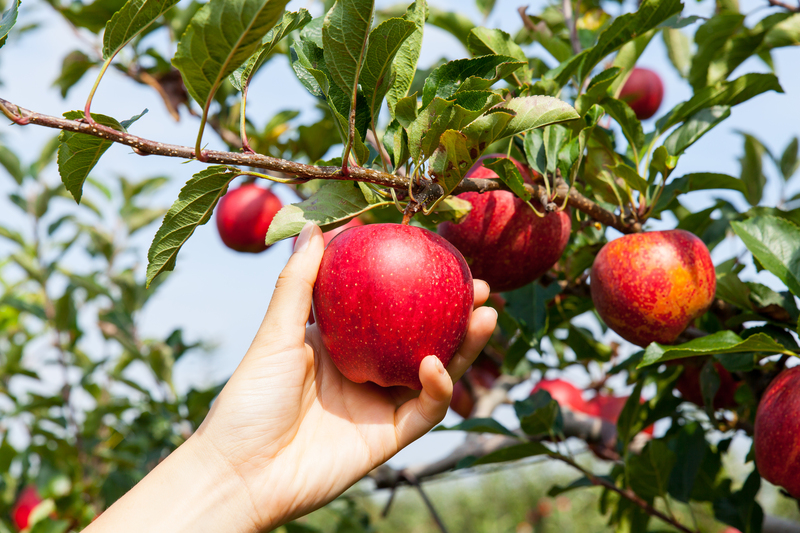Nurturing Nature and Dogs: 20 Gardening Tips for Pet Lovers
Posted on 19/09/2025
Nurturing Nature and Dogs: 20 Gardening Tips for Pet Lovers
Gardening and dogs--two passions that bring boundless joy, vitality, and beauty into our lives. For dog parents who cherish both their furry friends and their lush gardens, striking a balance can sometimes be challenging. How do you maintain a thriving paradise while also ensuring the safety and happiness of your dogs? Fortunately, with thoughtful planning and mindful choices, you can cultivate a safe, stunning, and dog-friendly garden that nurtures nature and keeps tails wagging.
In this comprehensive guide, we present 20 practical gardening tips for dog lovers to help you create a harmonious, eco-friendly, and pet-safe outdoor haven. Whether you're a seasoned green thumb or cultivating your first beds, these expert strategies will inspire you to embrace both plants and pups!
Why Design a Pet-Friendly Garden?
Dogs love the outdoors--they romp, dig, sniff, and play, contributing to the joyful bustle of a garden. However, traditional gardens sometimes feature plants, materials, or designs that aren't safe for pets. Creating a dog-safe garden not only enhances your landscape's beauty but also protects your loyal companions from hazards.
- Minimize toxic risks: Eliminate or fence off poisonous plants.
- Promote exercise and stimulation: Creative layouts support healthy activity.
- Reduce damage: Strategic paths and barriers protect plants and restrict digging.
- Enhance mental health: Safe outdoor time stimulates dogs' minds and calms their spirit.

Top 20 Gardening Tips for Pet Lovers
Ready to transform your backyard into a haven for both nature and your four-legged friends? Here are our best gardening tips for dog owners to foster harmony, health, and beauty.
1. Choose Dog-Safe Plants
Many popular plants--like azaleas, lilies, and daffodils--are toxic to pets if ingested. Instead, grow dog-friendly plants such as marigolds, sunflowers, rosemary, and snapdragons. Always research before planting!
2. Avoid Harmful Chemicals
Opt for organic gardening methods and use natural pest control to protect both your plants and your pup. Chemical pesticides, fertilizers, and herbicides can be extremely hazardous to dogs.
3. Create Secure Boundaries
Install sturdy fences or natural hedges around your garden. Not only do they keep your dog safe within your yard, but they also deter wildlife that might disrupt your landscape.
4. Design Dog Paths
Dogs love routine trails. Work with their habits by encouraging natural pathways with stone, mulch, or grass, so your garden beds thrive undisturbed. Pathways also help prevent trampling and soil compaction.
5. Provide Shady Spots
Both dogs and delicate plants benefit from areas of cool shade. Plant trees or install shade sails to create relaxing hideaways where your dog can rest after play.
6. Offer Safe Water Features
A shallow pond, fountain, or even a simple dog-friendly bowl can encourage hydration and play--but ensure they are clean and free of toxins or algae. Avoid deep ponds or swimming pools unsupervised.
7. Use Mulch Carefully
Not all mulch is created equal. Cocoa mulch is highly toxic to dogs; instead, choose pet-safe wood chips or shredded pine which also add nutrients to your soil.
8. Select Durable Surfaces
Hardy surfaces like flagstone, pavers, or decomposed granite withstand zoomies and mud better than fragile turf. Keep walkways smooth and paw-friendly.
9. Build Digging Zones
Have a dig-happy dog? Give them a designated sand or earth pit where digging is encouraged, teaching them to avoid flower beds and vegetable patches. Reward and redirect your pup for using it!
10. Fence Off Fragile Areas
Some plants and beds are too delicate for playful paws. Use decorative fencing, edging, or raised beds to keep pups at bay while maintaining your garden's beauty.
11. Grow Pet-Safe Edibles
Consider planting a "dog garden" with safe herbs and veggies like carrots, peas, parsley, and basil. Your pet can sample these healthy treats right from the backyard!
12. Prevent Fleas and Ticks Naturally
Incorporate plants with natural pest-repellent properties--such as lavender, mint, rosemary, and marigolds--to effectively keep fleas and ticks away from both dogs and humans.
13. Avoid Thorny or Spiky Plants
Roses, cacti, and agave may add texture but can injure curious noses and paws. Opt for soft, non-toxic foliage wherever your dog likes to roam.
14. Compost Wisely
Although compost is excellent for soil, keep piles securely contained. Moldy or decomposing organic matter may be dangerously attractive--and toxic--to dogs if ingested.
15. Secure Garden Tools
Store all garden tools safely away after use. Pruners, trowels, and hoses can be tempting chew toys but can cause serious injury to dogs.
16. Incorporate Sensory Experiences
Add a variety of textures, scents, and shaded nooks to enrich your dog's time outdoors. Sensory gardens delight both owners and their enthusiastic canine companions.
17. Regularly Inspect for Hazards
Check your garden frequently for loose wires, sharp objects, or invasive weeds. Routine inspections keep the garden safe and highlight new risks before they become problems.
18. Create Visual Barriers
If your pet is easily overstimulated by passing wildlife or neighbor dogs, consider planting thick hedges or installing attractive fences that limit distractions and barking.
19. Offer Play Zones
Dedicate an area for fetch, tunnels, or agility toys. Exercise and mental stimulation help curb destructive behaviors--leaving your plants safe and your dog happily entertained.
20. Educate and Supervise
Training dogs with positive reinforcement, supervised outdoor time, and gentle redirection ensures your new garden rules stick. Consistency is key to a harmonious space.
Choosing the Right Dog-Friendly Plants
Choosing plants is one of the most important decisions for any pet-friendly garden. Here's a quick list of safe plant options for dog owners:
- Sunflowers (Helianthus)
- Marigolds (Tagetes)
- Rosemary (Rosmarinus officinalis)
- Snapdragons (Antirrhinum)
- Basil (Ocimum basilicum)
- Carrots (Daucus carota)
- Thyme (Thymus vulgaris)
- Fuchsias (Fuchsia)
- Spider plants (Chlorophytum comosum) for shaded patios
- Pet-safe grasses like Blue Fescue or Pampas Grass
*Remember, many common plants are toxic to dogs, including foxglove, oleander, sago palm, tulips, and lilies. Always check a reliable list or ask your veterinarian before introducing new flora!
Ways to Make Your Garden More Enjoyable for Dogs
- Include interactive toys: Hide toys among the foliage to encourage your dog's sense of adventure.
- Frequent clean-up: Clear away fallen fruits, branches, or mushrooms regularly to avoid temptations.
- Provide plenty of fresh water and shade: Especially helpful during the hot summer months.
- Build obstacles or agility courses: Great fun that doubles as training and active play!
- Set pup-friendly boundaries: Help your dog learn "on" and "off" limits so plants establish well.
Balancing Biodiversity and Pet Safety
Nurturing nature and dogs goes hand in hand when you focus on biodiversity and eco-friendly practices. Encourage pollinators with native wildflowers, attract birds with feeders, and foster healthy soil with compost--but always make sure wildlife feeders and compost bins are out of reach of curious paws!
Eco-Conscious Dog-Friendly Garden Tips
- Use rainwater harvesting for sustainable watering.
- Opt for manual weeding over chemicals.
- Let lawn clippings decompose to naturally fertilize without added chemicals.
- Install bee hotels and bug boxes high up and away from dogs' reach.
- Favor indigenous plant varieties for hardiness and ecological support.
A thoughtfully planned garden not only delights the senses and strengthens the bond between you and your pets but also supports a thriving ecosystem right on your doorstep.

FAQs: Gardening with Dogs
Q: What are signs my dog has eaten a toxic plant?
A: If your dog vomits, becomes lethargic, drools excessively, or acts unusually after time in the garden, consult your vet immediately. Keep emergency contacts handy and always supervise young dogs outdoors.
Q: How do I keep my dog from digging up plants?
A: Use dog-friendly deterrents like citrus peels in beds, redirect digging behavior to a designated area, and provide plenty of toys and exercise.
Q: How can I dog-proof my garden on a budget?
A: Use upcycled materials for fencing, plant inexpensive tough groundcovers, and choose hardy, perennial dog-safe plants. Mulch with pine needles or straw instead of cocoa or dyed mulches.
Conclusion: Cultivating a Happy, Healthy Garden for Both Pets and Nature
With a pet-friendly garden, you don't have to choose between a vibrant, flourishing outdoor space and a safe, delightful haven for your pets. With these 20 gardening tips for pet lovers, you can nurture both your passion for gardening and your love for dogs, creating an environment where nature and dogs thrive together.
Start planning your dog-friendly garden today--your plants, your pets, and your planet will thank you!

